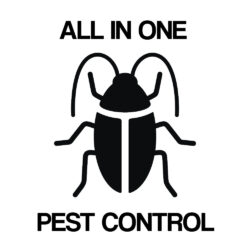Safeguarding Homes in Arlington: A Definitive Guide to Pest Control in Arlington,Texas
Nestled between Dallas and Fort Worth, Arlington is a vibrant city known for its rich history, diverse culture, and bustling entertainment scene. However, the warm and humid climate that characterizes this region also creates conditions favorable for various pests. In this comprehensive guide, we will delve into the importance of pest control in Arlington, offering practical strategies for managing termite control, cockroach control, ant control, bee control, snake control, and spider control.
Termite Pest Control Troubles: Fortifying Homes Against Silent Invaders
Arlington’s warm climate makes it susceptible to termite infestations, particularly by subterranean and drywood termites. Subterranean termites build colonies underground and access structures through mud tubes, while drywood termites establish colonies within the wood they infest. Regular termite inspections and preventive treatments are crucial to protect homes from the structural damage caused by these silent invaders.
Why Termite Control in Alington is Paramount:
- Structural Integrity: Termites can compromise the structural stability of homes, necessitating costly repairs.
- Preventive Measures: Routine termite inspections and treatments help thwart infestations, preserving Arlington’s architectural charm.
Cockroach Pest Control in Arlington Conundrum: Effectively Managing Resilient Pests
Cockroaches, including German and American varieties, thrive in Arlington’s warm and humid conditions. These pests pose health risks, trigger allergies, and can contaminate food. Integrated pest management (IPM) techniques, such as sanitation, sealing entry points, and targeted treatments, are vital for effective cockroach control.
Why Cockroach Control is Crucial:
- Health Hazards: Cockroaches can spread bacteria and allergens, contributing to respiratory issues.
- Rapid Reproduction: Cockroaches reproduce swiftly, necessitating prompt control measures.
Ant Control in Arlington: Addressing Persistent Invaders
Ants, ranging from Argentine to carpenter and fire ants, are common intruders in Arlington homes. These pests invade structures in search of food, leaving visible trails. Ant control involves locating and sealing entry points, eliminating food sources, and implementing targeted treatments to disrupt ant colonies.
Why Ant Control is Essential:
- Food Contamination: Ants can contaminate food supplies, posing health risks to residents.
- Structural Threats: Carpenter ants, especially, can cause structural damage by nesting in wood.
Bee Control in Arlington: Balancing Conservation and Safety
Bees, essential for pollination, can become a nuisance and pose risks to Arlington residents. Bee control involves identifying and relocating hives, especially in areas where their presence may jeopardize safety.
Why Bee Control is Essential:
- Safety Concerns: Stinging insects like bees can pose risks, especially to individuals with allergies.
- Preserving Bee Populations: Whenever possible, control measures should focus on relocating rather than exterminating bees to support environmental conservation.
Snake Control in Arlington: Mitigating Unwanted Encounters
Arlington’s diverse landscapes occasionally attract snakes, some of which can pose risks to residents. Snake control involves identifying and sealing entry points, removing attractive habitats, and employing humane removal methods when necessary to ensure the safety of both residents and the snakes.
Why Snake Control in Arlington is Essential:
- Safety Concerns: Certain snake species can be venomous, posing a threat to residents.
- Peace of Mind: Effective snake control measures provide peace of mind for residents, especially in areas with abundant wildlife.
Spider Control in Arlington: Managing Arachnid Invaders
Spiders, while beneficial for controlling other pests, can become a nuisance in Arlington homes. Venomous spiders, such as the brown recluse and black widow, pose potential health risks. Spider control involves identifying and eliminating hiding spots, as well as implementing targeted treatments to reduce spider populations.
Why Spider Control is Essential:
- Venomous Species: Certain spiders can pose health risks, especially to individuals with sensitivities.
- Nuisance Factor: Excessive spider populations can become a nuisance in homes, leading to discomfort for residents.
Effective Pest Control Strategies for Arlington Residents
To combat the diverse range of pests in Arlington, residents should adopt a proactive approach:
- Regular Inspections: Schedule routine pest inspections to detect issues early.
- Sealing Entry Points: Close off potential entry points for pests, including gaps, cracks, and openings around windows and doors.
- Moisture Control: Addressing moisture issues can deter pests like termites and mold-loving insects.
- Professional Pest Control Services: Enlist the expertise of local pest control professionals who understand the specific challenges in Arlington.
Conclusion: A Pest-Resistant Arlington
Arlington’s residents can enjoy a pest-resistant living environment by implementing a comprehensive pest control strategy. Understanding the diverse pests that thrive in the warm and humid climate is the first step toward effective pest management. By adopting proactive measures, including regular inspections and professional services, residents can safeguard their homes from termites, cockroaches, ants, bees, snakes, spiders, and other pests. Embracing these strategies ensures that Arlington remains a welcoming and pest-resistant city, allowing residents to thrive amidst its cultural richness and diverse landscapes.
